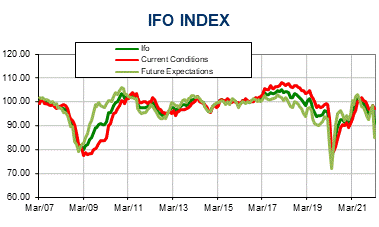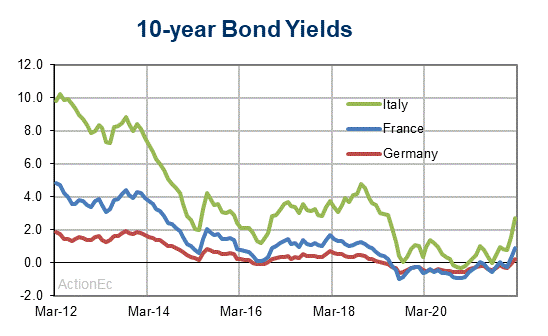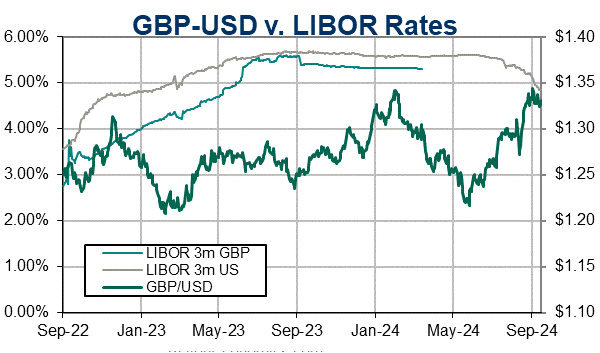The data releases of the Eurozone since last week are backing the ECB’s decision to ease policy again, even if the move to add additional asset purchases remains controversial and despite the news of another German Executive Board member resignation.
At the same time central bankers have further stepped up the pressure on governments to add fiscal support to boost the economy, and it seems the “climate change” debate may offer a way to convince even Germany to step up investment spending, while increasingly leaving a mark on the political landscape. The BoE meanwhile continues to position for rate cuts, as Brexit uncertainty drags on and the political turmoil in Westminster continues.
German economy contracted again in Q2
The Confidence data for the second quarter pretty much confirmed that the economy contracted again in Q2. The September IFO survey may have shown an unexpected improvement in the headline reading, but still left the Index down -1.8% q/q. The Manufacturing PMI for Germany was revised marginally higher, but also still pointed to ongoing contraction, as did the overall Eurozone PMI reading.
This followed an ESI economic confidence reading that on Friday was reported at just 101.7, far below expectations and down from 103.1 in August. This left the index down -1.6% q/q, highlighting that the weakness that started in the German manufacturing sector continues to deepen and spread.

So far the labour market has held up. German jobless numbers unexpectedly declined in September and the Eurozone jobless rate for August also improved. Job creation still continues then, and consumer confidence actually improved last month, according to the ESI reading, although survey findings suggest that it is only a matter of time until the labour market starts to feel the pain.
But ECB measures remain controversial
So the doves at the ECB that pushed through the latest set of easing measures against resistance from the core Eurozone countries will feel vindicated. Draghi’s term may come to an end, but Lagarde has already signaled that she will pretty much follow in his footsteps and the surprise resignation of Germany’s Executive Board member Lautenschlaeger last week highlighted that hawks don’t stand much of a chance at the top of the central bank.
Pressure to complement the ECB’s expansionary policies with fiscal stimulus is mounting. Berlin already decided to bend its own debt rules by agreeing to a “climate package” this week and recent suggestions that a Eurozone-wide climate investment package, financed via jointly backed bonds could indeed find some support even in Germany.

Climate change debate could boost investment and shake up political landscape
The climate change debate is also leaving its mark on the political landscape. Already at the European Parliament election earlier in the year, rising support for the Green Party helped to stem the impact of the AfD and other populists. Sunday’s election in Austria saw a similar result.

Bund curves steepens while spreads remain tight
With the ECB remaining on standby and growth looking weak Eurozone spreads have continued to come in while curves steepened from the long end. EURUSD meanwhile, printed a new 28-month low at 1.0879 over the past week, which on this occasion reflected broader Dollar firmness (with EURJPY, EURCHF and other euro crosses holding steady or gaining). The new big-trend low is a fresh reaffirmation of a bear trend that’s been in play since early 2018. More of the same looks likely against the current background of weak growth and falling inflation.
Meanwhile in UK……..
Comments from BoE’s Saunders on Friday effectively confirmed what the last central bank statement already indicated, namely that the BoE is now positioning for a rate cut even if a no-deal Brexit scenario can be avoided. The UK economy already contracted in the second quarter and while manufacturing PMI numbers point to ongoing contraction in the manufacturing sector.
Ongoing uncertainty clearly has a dampening impact and for the BoE that means that unless there is a sudden turnaround and a deal is reached quickly, spare capacity is likely to emerge. Despite all this uncertainty the 10-year Gilt yield is settling in above the 0.5% mark once again and the 2-10 curve steepened, even if 5 year and 7 year rates remain below the 2-year rate.

Click here to access the Economic Calendar
Andria Pichidi
Market Analyst
Disclaimer: This material is provided as a general marketing communication for information purposes only and does not constitute an independent investment research. Nothing in this communication contains, or should be considered as containing, an investment advice or an investment recommendation or a solicitation for the purpose of buying or selling of any financial instrument. All information provided is gathered from reputable sources and any information containing an indication of past performance is not a guarantee or reliable indicator of future performance. Users acknowledge that any investment in Leveraged Products is characterized by a certain degree of uncertainty and that any investment of this nature involves a high level of risk for which the users are solely responsible and liable. We assume no liability for any loss arising from any investment made based on the information provided in this communication. This communication must not be reproduced or further distributed without our prior written permission.



















